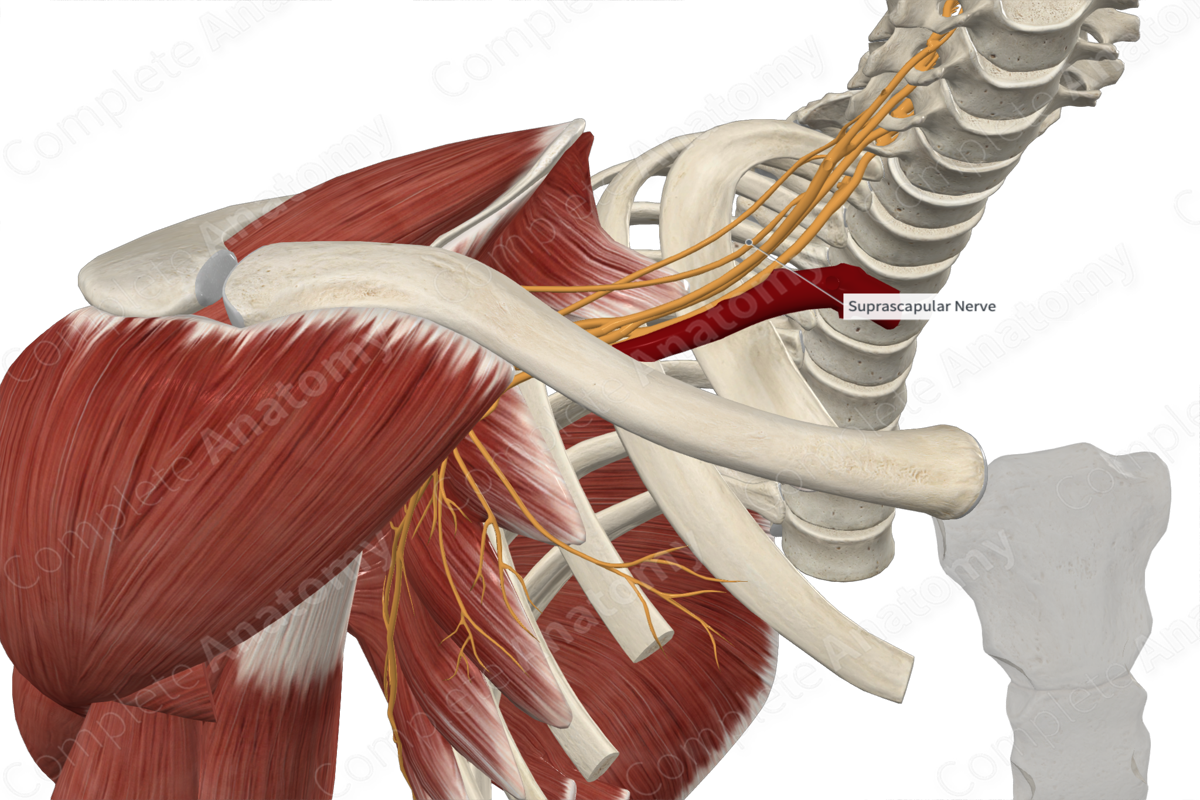
Quick Facts
Origin: Superior trunk of the brachial plexus.
Course: It runs laterally through the posterior triangle to the posterior scapular region.
Branches: No named branches.
Supply: Sensory and motor innervation. Sensory to the glenohumeral and acromioclavicular joints, motor to the infraspinatus and supraspinatus muscles.
Related parts of the anatomy
Origin
The suprascapular nerve arises from the superior trunk of the brachial plexus. It contains fibers from spinal cord segments C5 and C6.
Course
The suprascapular nerve emerges from the superior trunk of the brachial plexus in the neck. It runs laterally through the posterior triangle and then through the scapular notch to the posterior scapular region. Here it runs with the suprascapular artery and innervates the supraspinatus muscle.
The nerve continues inferiorly and laterally, passing through the spinoglenoid notch, also known as the greater scapular notch, to reach the inferior scapular region. At the spinoglenoid notch, small branches extend laterally to the glenohumeral joint. The remaining bulk of fibers bend medially to innervate the infraspinatus muscle.
Branches
Shortly after passing through the scapular notch, an unnamed branch of the suprascapular nerve runs medially into the supraspinatus muscle.
After passing through the spinoglenoid notch, the nerve branches into a lateral extension supplying the glenohumeral joint and a medial branch innervating the infraspinatus muscle.
Supplied Structures
The suprascapular nerve is a mixed nerve consisting of both sensory and motor fibers. The sensory branches innervate the glenohumeral and acromioclavicular joints. The motor branches innervate the supraspinatus and infraspinatus muscles.
Learn more about this topic from other Elsevier products



